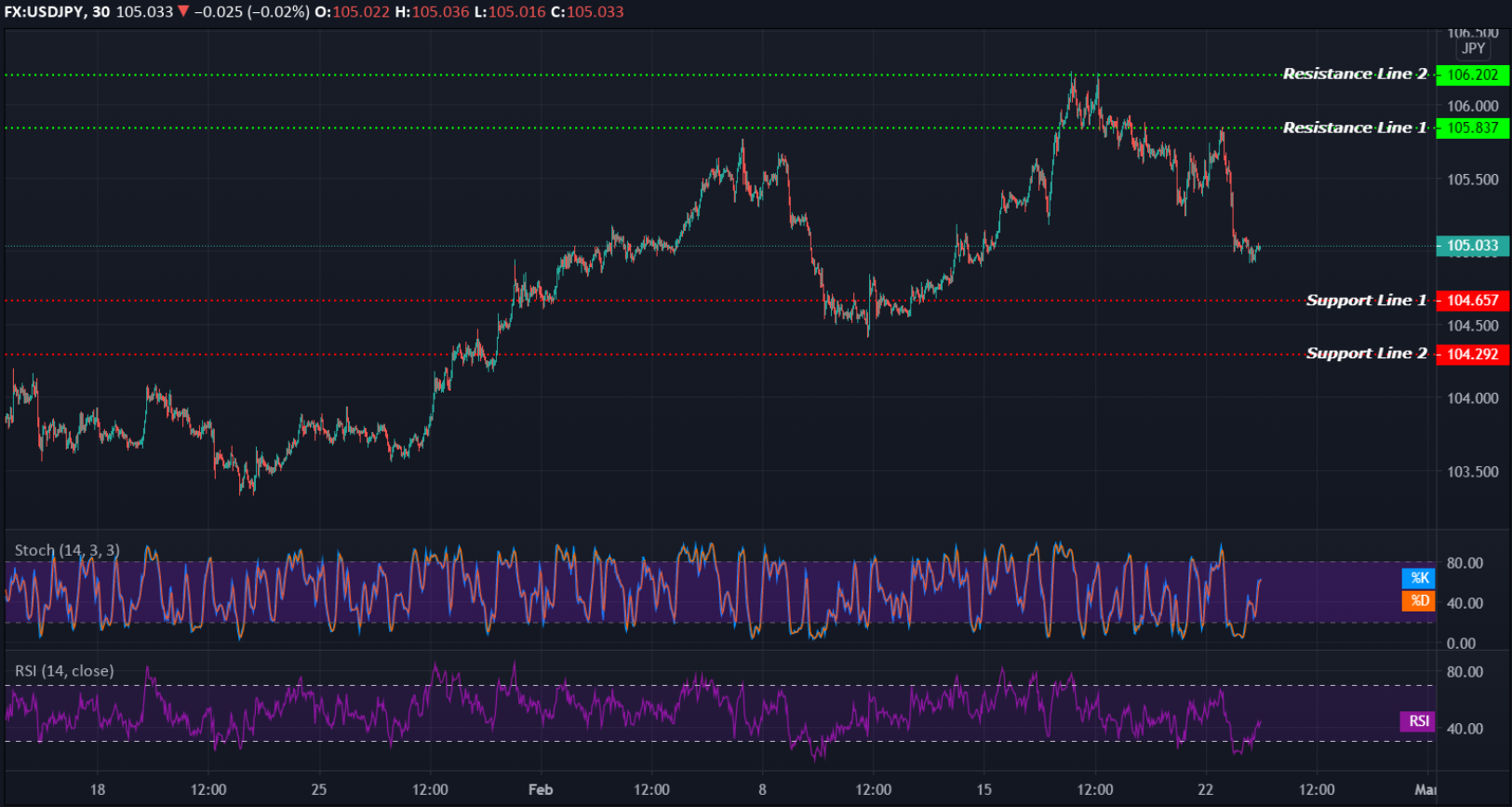EQUITIES
Asia-Pacific markets were higher on Tuesday. The Shanghai composite gained 0.64% while the Hong Kong’s Hang Seng index gained 1.81%. South Korea’s KOSPI at 0.46% higher, the Australia’s S&P/ASX 200 added 0.86%, the Singapore’s Straits Times index rose 0.67%. and the India’s S&P BSE Sensex index up 0.99%.
Markets in Japan are closed on Tuesday for a holiday.
The Nasdaq Composite fell 2.46% to close at 13,533.05. The S&P 500 declined 0.8% to end its trading day at 3,876.50. The Dow Jones Industrial Average bucked the overall trend as it edged 27.37 points higher to close at 31,521.69.
OIL
Oil prices were higher in the morning of Asia trading hours on a tight global supply outlook after a deep freeze in Texas shut in crude production last week. International benchmark Brent crude futures traded to $66.44 per barrel, while the U.S. crude futures at $62.68 per barrel.
Overnight, the Brent close at $65.24, while WTI futures ended at $61.49 per barrel.
CURRENCIES
The U.S. dollar index fell to 89.98 on Tuesday, its lowest since mid-January.
Commodity-linked currencies loitered around multi-year highs. The Canadian, Australian and New Zealand dollars to their highest in roughly three years.
Bitcoin dropped as much as 13% and was trading around $49,000.
GOLD
Gold climbed a 1-week peak on Tuesday, bolstered by a weaker U.S. dollar and a retreat in US Treasury yields.
The bullion trading at $1,811.60 an ounce, while added around $1,811.20 per ounce for gold futures. Previously closed at $1,810.50 and $1,808.40, respectively.
Silver declined at $28.03 an ounce, having earlier hit a 3-week peak at $28.31. Platinum at $1,266.00, while palladium at $2,280.00.
ECONOMIC OUTLOOK
Asian share markets inched higher on Tuesday as rising commodity prices boosted market expectations of an improved growth outlook, although the gains were pared on rising U.S Treasury yields and inflation prospects.
Technology shares were watched by investors on Tuesday after their counterparts declined overnight on Wall Street. The rising yields and inflation fears triggered valuation concerns, that led to a further rotation out of the big tech stocks.
Federal Reserve Chair Jerome Powell in his semi-annual testimony before Congress this week is likely to reiterate a commitment to keeping policy super easy for as long as needed.
Crude oil forecasts:
- Goldman Sachs Commodities Research raised its Brent crude oil price forecasts by $10 for Q2 and Q3 of 2021, citing lower expected inventories, higher marginal costs to restart upstream activity and speculative inflows.
- The Wall Street bank expects Brent prices to reach $70 per barrel in the Q2 from the $60 it predicted previously and $75 in the Q3 from $65 earlier.
- Morgan Stanley expects Brent crude prices to climb to $70 per barrel in the Q3 on "signs of a much-improved market" including prospects of a pick-up in demand.
To date, number of confirmed worldwide cases for COVID-19 pandemic has surpassed 111.709 million affecting 213 countries and territories around the world and 2 international conveyances, recording more than 2.473 million fatality globally.
TECHNICAL OUTLOOK
[USDJPY]
Important Levels to Watch for Today:
- Resistance line of 105.837 and 106.202.
- Support line of 104.657 and 104.292.
Commentary/ Reason:
The Japanese yen is steady around at 105.033 per dollar, but not before the currency touched a new weekly high earlier on the day.
A sell-off in equity markets boosted the safe-haven demand for the yen, though capped on slightly weaker-than-expectations of economic data.
Asia trade was dampened by a public holiday in Tokyo, but renewed confidence that low U.S. interest rates will not rise anytime soon could clear the way for further gains in trade-exposed currencies at the dollar’s expense.
Federal Reserve Chair Jerome Powell to deliver his semi-annual testimony before Congress starting Tuesday and is likely to reiterate a commitment to keeping policy super easy for as long as needed to drive inflation higher.
The yen has been the worst performing major currency of 2021 because rising U.S. Treasury yields can draw investment from Japan. With local yields anchored by the Bank of Japan, the yen remains particularly sensitive to the U.S. bond market.















